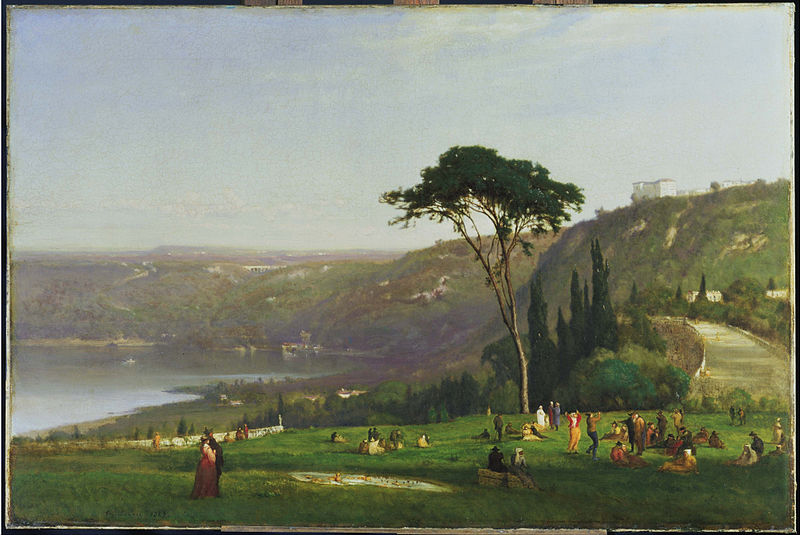Taft Museum of Art
February 9–May 19, 2019 | Fifth Third Gallery
 Georgia O'Keeffe, "Ranchos Church," No. II, NM, 1929, oil on canvas, 24 1/8 x 36 1/8 in., acquired 1930.The Phillips Collection, Washington D.C.
Georgia O'Keeffe, "Ranchos Church," No. II, NM, 1929, oil on canvas, 24 1/8 x 36 1/8 in., acquired 1930.The Phillips Collection, Washington D.C. The exhibition honors the vision of Duncan Phillips, who transformed his private collection into America’s first museum dedicated to modern art. All works in the exhibition are drawn from The Phillips Collection, Washington, D.C., which Phillips established in 1921, just six years before Charles and Anna Taft bequeathed their own collection and home to the people of Cincinnati, founding the Taft Museum of Art.
 Edward Hopper, Sunday, 1926, oil on canvas, 29 x 34 in., acquired 1926.The Philips Collection, Washington D.C.
Edward Hopper, Sunday, 1926, oil on canvas, 29 x 34 in., acquired 1926.The Philips Collection, Washington D.C.
"Taft Museum of Art’s current temporary exhibition in the third-floor gallery — begins with a lush work by George Inness. Set in an Italian countryside, associate curator Tamera Muente points out its three-dimensional appearance during a tour.

Entitled “Lake Albano,” a cypress tree cuts softly through the middle, acting as a space divider. Tile-roofed villas peek out from hills in the distance. In the foreground, people lounge, their features hazy and soft. Painted in 1869, the work represents the crossroads of Romanticism and Realism.

In the same room, Homer’s painting “To the Rescue” hangs in contrast. Two women walk along a seashore; they blur into the indistinct horizon, surrounded by clashes of white, tan and grayish blue. One of the women’s scarves hovers in the wind as a man carrying a rope follows behind them. Here, Muente says, Homer uses “broad, expressive strokes” to create a sense of human struggle against the sea. "
Complete article
This exhibition has been organized by The Phillips Collection, Washington, D.C.
Great article, lots of images